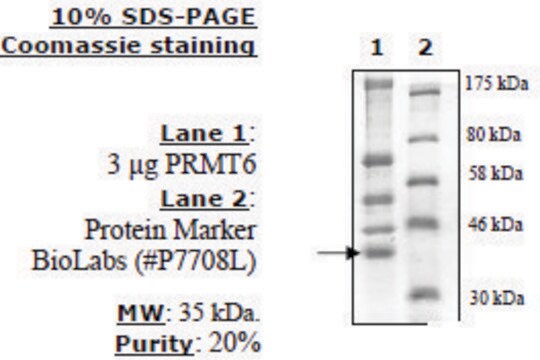All Photos(1)
About This Item
UNSPSC Code:
41106514
biological source:
human prostate
growth mode:
Adherent
karyotype:
Aneuploid
morphology:
Epithelial
products:
Not specified
receptors:
Dihydrotestosterone receptor
Recommended Products
Product Name
PNT1A human, 95012614, Normal prostate epithelium imortalized with SV40.
biological source
human prostate
growth mode
Adherent
karyotype
Aneuploid
morphology
Epithelial
products
Not specified
receptors
Dihydrotestosterone receptor
technique(s)
cell culture | mammalian: suitable
shipped in
dry ice
storage temp.
−20°C
Cell Line Origin
Human post pubertal prostate normal, immortalised with SV40
Cell Line Description
Established by immortalisation of normal adult prostatic epithelial cells by transfection with a plasmid containing SV40 genome with a defective replication origin. The primary culture was obtained from the prostate of a 35 year old male at post mortem. The cells contain the SV40 genome and express large T protein. They present the phenotype of differentiated luminal prostatic cells with the expression of cytokeratin 8 and 18 (markers for luminal glandular epithelia) and vimentin. Cytokeratin14, a marker of epithelial basal cells, is not expressed. PNT1A cells are non-tumourigenic in nude mice.
Application
PNT1A has been used to determine the variation in metabolite levels of human DU145 prostate cancer and PNT1A cells after treatment with selenomethionine (SeM) and Se-methylselenocysteine (SeMSC). It has also been used to study the effects of angiotensin II (Ang II) and relaxin 2 (RLN2) on the viability, proliferation, adhesion, migration and invasion of PNT1A cells.
Study of proliferation, oncogene activation and differentiation of adult prostatic cells and initial steps leading to transformation.
Culture Medium
RPMI 1640 + 2mM Glutamine + 6 -10% Foetal Bovine Serum (FBS).
Subculture Routine
Split sub-confluent cultures (70-80%) 1:3 to 1:10 i.e. seeding at 2-4x10,000 cells/cm2 using 0.25% trypsin or trypsin/EDTA; 5% CO2;37°C.
Other Notes
Additional freight & handling charges may be applicable for Asia-Pacific shipments. Please check with your local Customer Service representative for more information.
Choose from one of the most recent versions:
Certificates of Analysis (COA)
Lot/Batch Number
Sorry, we don't have COAs for this product available online at this time.
If you need assistance, please contact Customer Support.
Already Own This Product?
Find documentation for the products that you have recently purchased in the Document Library.
Our team of scientists has experience in all areas of research including Life Science, Material Science, Chemical Synthesis, Chromatography, Analytical and many others.
Contact Technical Service




